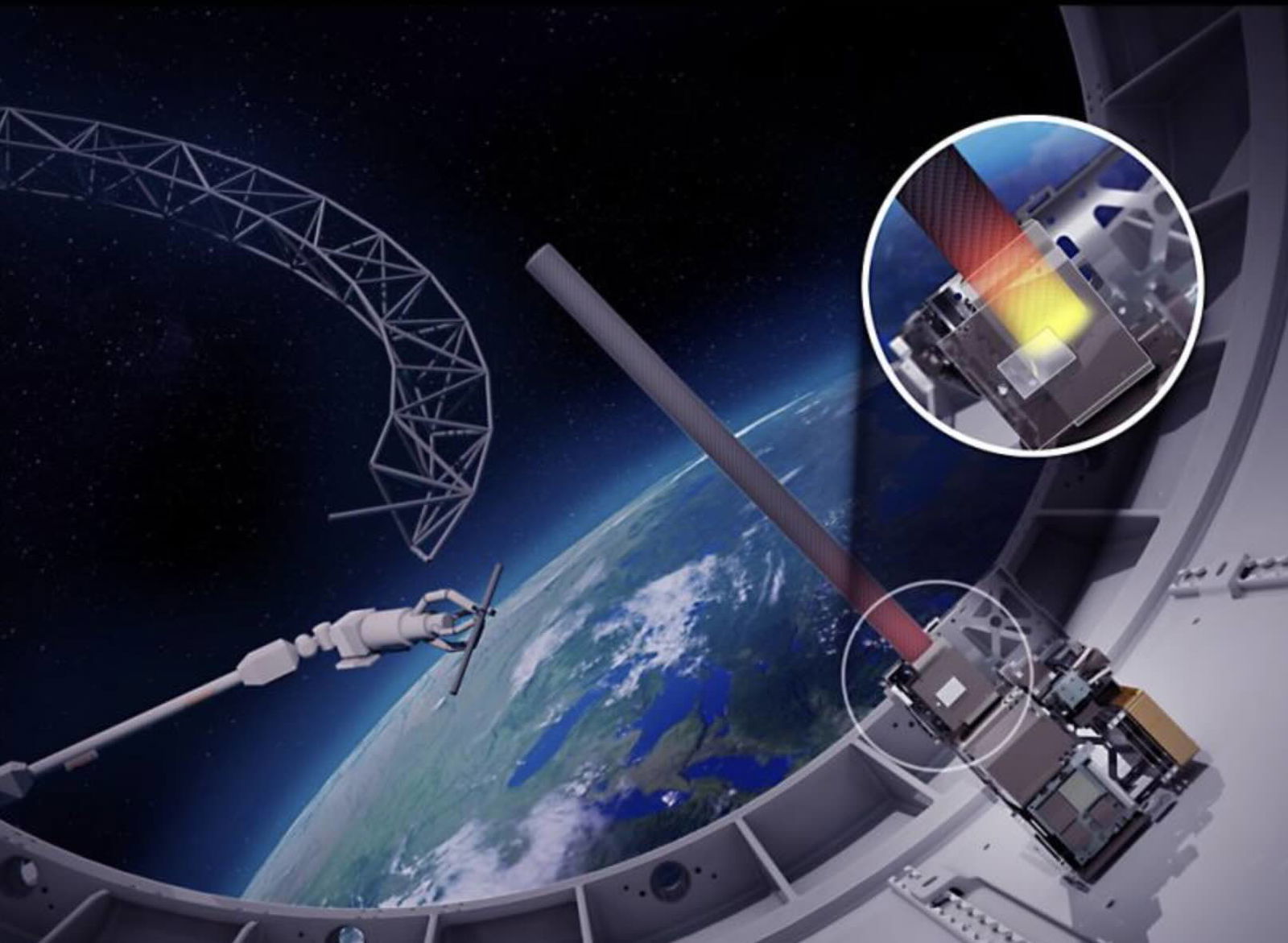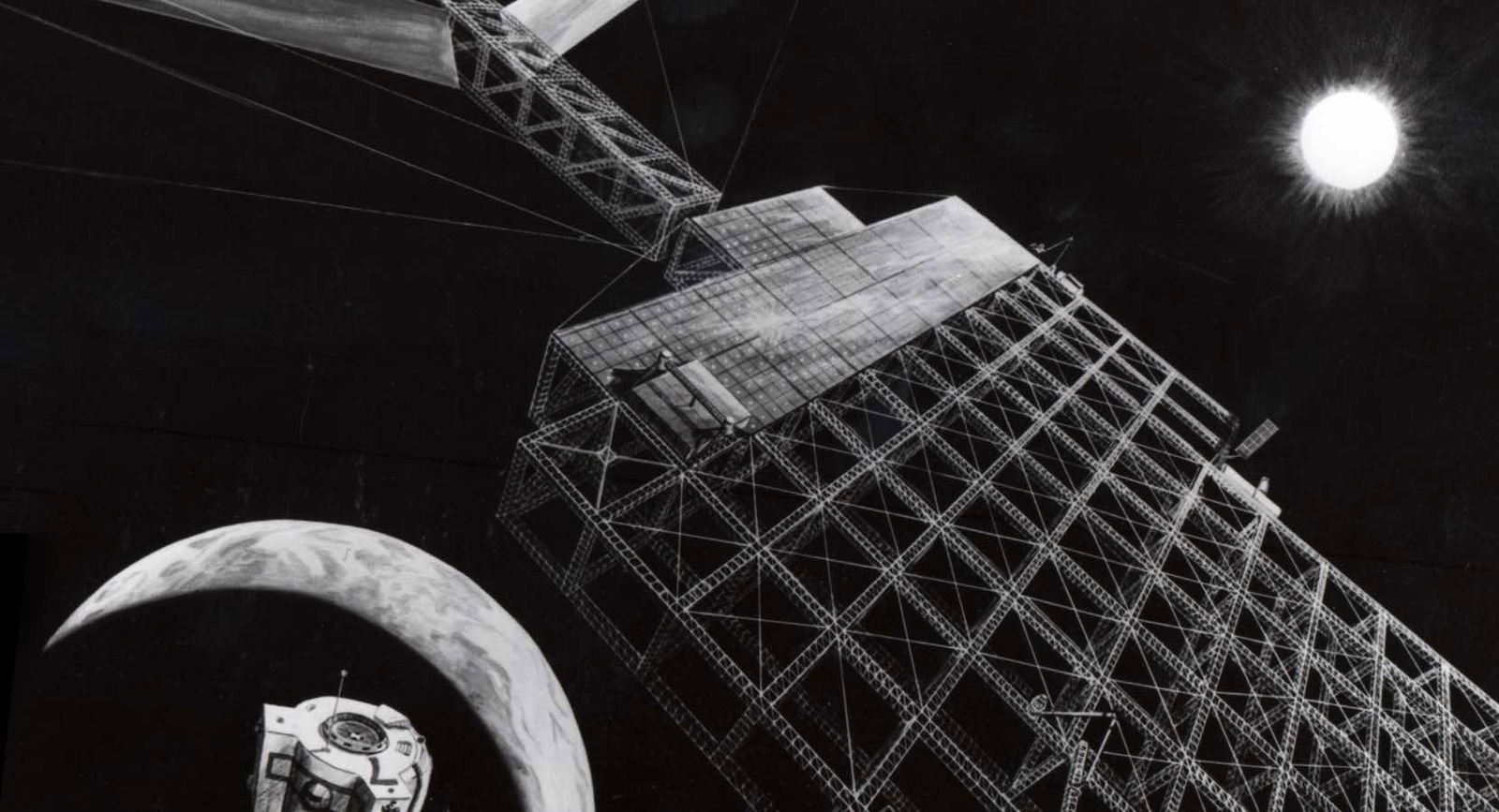The Defense Advanced Research Projects Agency (DARPA) is taking a significant step toward overcoming the challenges of assembling large-scale structures in orbit by testing new in-space manufacturing capabilities.
Despite significant advancements in spacecraft design and other related space technologies, building large-scale orbital structures has long represented a challenge due to the limitations imposed by the size and weight of cargo rockets can carry with them into orbit.
To overcome this, DARPA recently announced it is shifting the final phase of its Novel Orbital and Moon Manufacturing, Materials, and Mass-efficient Design (NOM4D) program from laboratory experiments to small-scale orbital demonstrations.
NOM4D (pronounced “nomad”) aims to test new materials DARPA has developed, which the agency says could significantly enhance the in-space assembly process in the coming years.
Rethinking Large-Scale Space Construction
Launched in 2022, the NOM4D program was established with one primary goal: overcoming traditional limitations imposed against space infrastructure. To accomplish this, the DARPA team behind the program envisioned the delivery of lightweight, raw materials to space, where they would be assembled in orbit.
Traditional approaches have relied mainly on the pre-assembly of space structures on Earth, which are then delivered to orbit where expansion or limited additional construction may occur.
Overcoming such limited past approaches, NOM4D seeks to introduce a new paradigm in space infrastructure that will enable the assembly of much larger orbital structures, which are also designed to be more mass-efficient than those carried to space aboard rockets.
DARPA says the NOM4D program is now on the path toward making this futuristic vision of orbital infrastructure a nearer-term reality, thanks to rapid technical progress in earlier project phases. Following successful experimentation on the ground, the agency has greenlit two key orbital tests to evaluate whether this approach can work beyond the lab.
From the Lab to Structures in Orbit
According to NOM4D program manager Andrew Detor, a pair of university-led research teams from the California Institute of Technology (Caltech) and the University of Illinois Urbana-Champaign will guide the third phase of the program, following significant advancements each made during the prior phase of development.
“Originally, Phase 3 was going to be about making things more precisely in the lab than we did in Phase 2,” Detor recently said, adding that after some thought, the NOM4D team ultimately thought “there would be more impact if we took the capabilities we have now and actually go demonstrate them in space to show that it can be done.”


However, it is much easier said than done to take the work the NOM4D team accomplished in the lab and carry it into orbit.
“Pushing the performers to do a demo in space means they can’t just sweep challenges under the rug like they could in a lab,” Detor said. “You better figure out how it’s going to survive in the space environment.”
Mass-Efficiency in Space
The Caltech team’s primary focus will involve developing mass-efficient designs for in-space manufacturing. Partnering with Momentus Inc., the technology is expected to launch aboard the Momentus Vigoride Orbital Services Vehicle as early as February 2026, carried into space as part of the SpaceX Falcon 9’s Transporter-16 mission.
During the orbital experiment, a 1.4-meter diameter circular truss will be assembled, a process that aims to simulate the structural framework of a space antenna. A key objective of the test will be to help the NOM4D team gauge whether lightweight composite fiber longerons could be arranged into large-scale structures without any human hands present.
“If the assembly technology is successful, this would be the first step toward scaling up to very large space-based structures in the future,” Detor said.
Meanwhile, the University of Illinois Urbana-Champaign (UIUC) team, in collaboration with Voyager Space, plans to test a high-precision in-space composite-forming process on board NASA’s Commercial Resupply Mission NG-24 in April 2026.
The UIUC team will use a special frontal polymerization process to combine and harden sleeves composed of carbon fiber with liquid monomers in space without requiring any significant heat source. Detor emphasized that this technology will also play a crucial role in large-scale space construction in the future.
“This ‘frontal polymerization’ method allows structures to harden progressively, enabling potentially unlimited expansion—only restricted by the available feedstock,” Detor says.
Future Implications for Future Structures in Orbit
Finally, an additional research team based at the University of Florida will conduct tests on the ground to help refine techniques for bending sheet metal using lasers. This experimentation stage will be conducted in collaboration with engineers at NASA’s Marshall Space Flight Center and is hoped to offer additional resources and potential manufacturing methods for space-based construction.
If all goes according to plan, the NOM4D team’s innovations can potentially revolutionize space infrastructure in the decades ahead. In addition to larger, more complex orbital laboratories that can house astronauts for a range of scientific missions, the DARPA team’s technologies could also help facilitate the construction of large radio antennas for communications systems, as well as solar arrays for power generation and refueling stations for future spacecraft.
Another longer-term objective the team has in mind involves 100-meter-wide space-based antennas, which could dramatically enhance situational awareness in the cislunar region between Earth and the Moon, where communication and other operational factors can become challenging, especially during crewed lunar exploration missions.
Detor expressed confidence that the NOM4D team’s vision could improve all these areas, while helping to facilitate advanced new capabilities that will further humankind’s explorations beyond the Moon.
“This could pave the way for a future where massive space structures support national security, commercial ventures, and deep-space exploration,” Detor said.
Micah Hanks is the Editor-in-Chief and Co-Founder of The Debrief. He can be reached by email at micah@thedebrief.org. Follow his work at micahhanks.com and on X: @MicahHanks.

